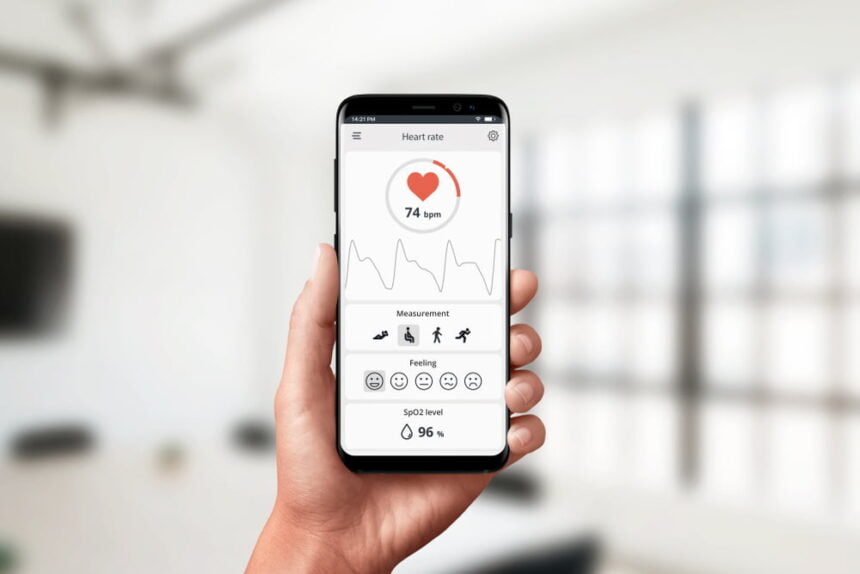Healthcare apps are driving some major changes in our lives. You could create a viable business publishing healthcare apps.
Designing a healthcare app is no easy feat. It takes a lot of persistence, expertise, and testing to get the app done right. However, that doesn’t mean you shouldn’t make one.
Healthcare apps are both trending and lucrative right now. For instance, the healthcare app industry is expected to reach $43.5 billion in 2022. In 2030, it’s expected to reach over $100 billion. That means you could be “in early” to the race of building a healthcare app.
There are four critical steps to planning and designing your healthcare app to make it a successful endeavor. You can also create an app for an existing healthcare business. This article will discuss the steps and how to think about them when designing your app.
1. Align your goals (business & app related)
Before you start designing your app, you’ll need to organize your goals. What do you want to achieve with the app? How long do you want this process to take? It’s also crucial to compare your health app goals to your business goals. Make sure your health app goals help your business achieve its other goals.
Remember that the more specific your goals are, the more likely you are to achieve them. For instance, a goal could be one thousand monthly users on the app. In addition, it’s an excellent idea to create a clear vision of what the app will be.
You can do this by creating an outline and listing features you’d like your app to incorporate. These features should produce the best user experience possible for your target audience, which we’ll discuss later. In addition, your goals are closely aligned with your user experience. The better the user experience, the more downloads, engagement, and retention your app will receive.
Finally, create a timeline for your app development process. Make sure to include deadlines for all of your team members, including yourself. For example, set a deadline for when a list of features is due. A timeline ensures your team stays on task, meets deadlines, and completes your app development project on budget and on time.
2. Focus on your target audience
The next step in designing your healthcare app is identifying your target audience and focusing on them. One of the best ways to understand your target audience is to talk to them. Try to bounce ideas off your audience and see if they resonate. Some of your best business ideas come from those who engage with your business.
Another way to learn more about your target audience is to create archetypes. Archetypes aren’t always real people, but they represent your target audience’s interests and perspectives. You’re trying to predict your future customer’s behavior based on what your app does for them. Additionally, creating archetypes allows you to think about your target audience from a different perspective. What is important to them? What motivates them? If you’ve never made archetypes before, then it’s worth testing out to see what you can write.
All healthcare apps place a heavy focus on the user. However, there’s a distinction between user experience and target audience. Your target audience is a part of your user experience. In other words, target audience analysis makes up one (large) slice of the pizza. As for user experience, we’ll cover the rest of that in the next step.
3. Bring the best user experience
User experience is a broad term, so we’re breaking it up into pieces. Since we’ve already discussed the target audience, it’s time to dive into the other aspects of user experience.
The next portion of the user experience is about the problem your health app solves. Before development begins, you’ll want a clear idea of what problem your app solves and how it will benefit your target audience. Be clear and specific in the problem you solve. Additionally, think about how you will frame the benefits of your app for marketing. You want an app that attracts users and provides lasting value to those who download it.
When you think about the benefits of your app and the problems it solves, think about the features that make people excited to open your app. For example, Apple released a new feature where you can take your body temperature with your iPhone and a smart thermometer. First, this solves a real problem. Most electronic thermometers (not smart ones) aren’t 100 percent accurate. That means people can take their temperature before heading into work without worrying about a false read. In addition, this feature provides benefits to people who like to track their health. You’re able to take your temperature, record data, and see trends.
4. Test from start to finish
Now that you’ve successfully laid out a structure for your app, listed features, and identified your target audience, it’s time to begin developing. Remember that keeping your team on the same page by setting goals and deadlines is paramount to a successful health app.
Testing allows your company to tweak features before the final product is complete. For instance, bugs and software issues are common. When you don’t test before launching, these bugs significantly impact the user experience of your health app. According to Digital Authority Partners, hiring consultants to provide guidance or recommendations for improving your app is a great idea during this phase.
Another aspect of testing is to perform beta tests with a smaller portion of your audience. Beta testing allows you to understand your app’s impact on users before it’s even released. That makes it simple to determine the best features for user experience backed by data.
Make sure to consider scalability. Are you planning on releasing your app to hundreds of thousands? If so, it’s essential to know the future scaling plans ahead of time. This allows your developers to design an app that won’t have server issues. In addition, testing your scalability by using load tests is one way to calculate your server response times, server memory usage, and other performance-based tests.
Finally, you’ve developed your health app. These are the four key steps when planning and designing your health app. The essence of a successful healthcare app revolves around the user. Put their needs first, and your healthcare app goals will be achieved.







